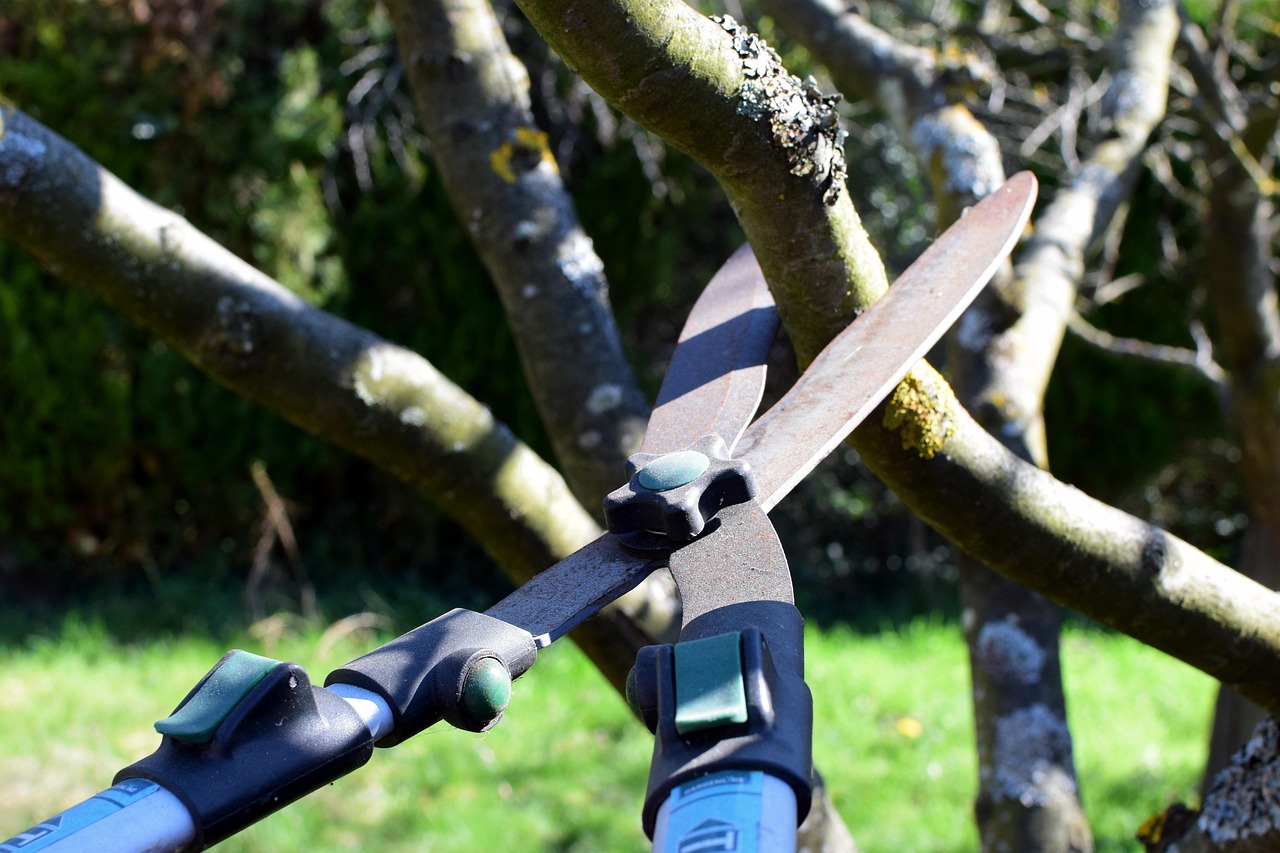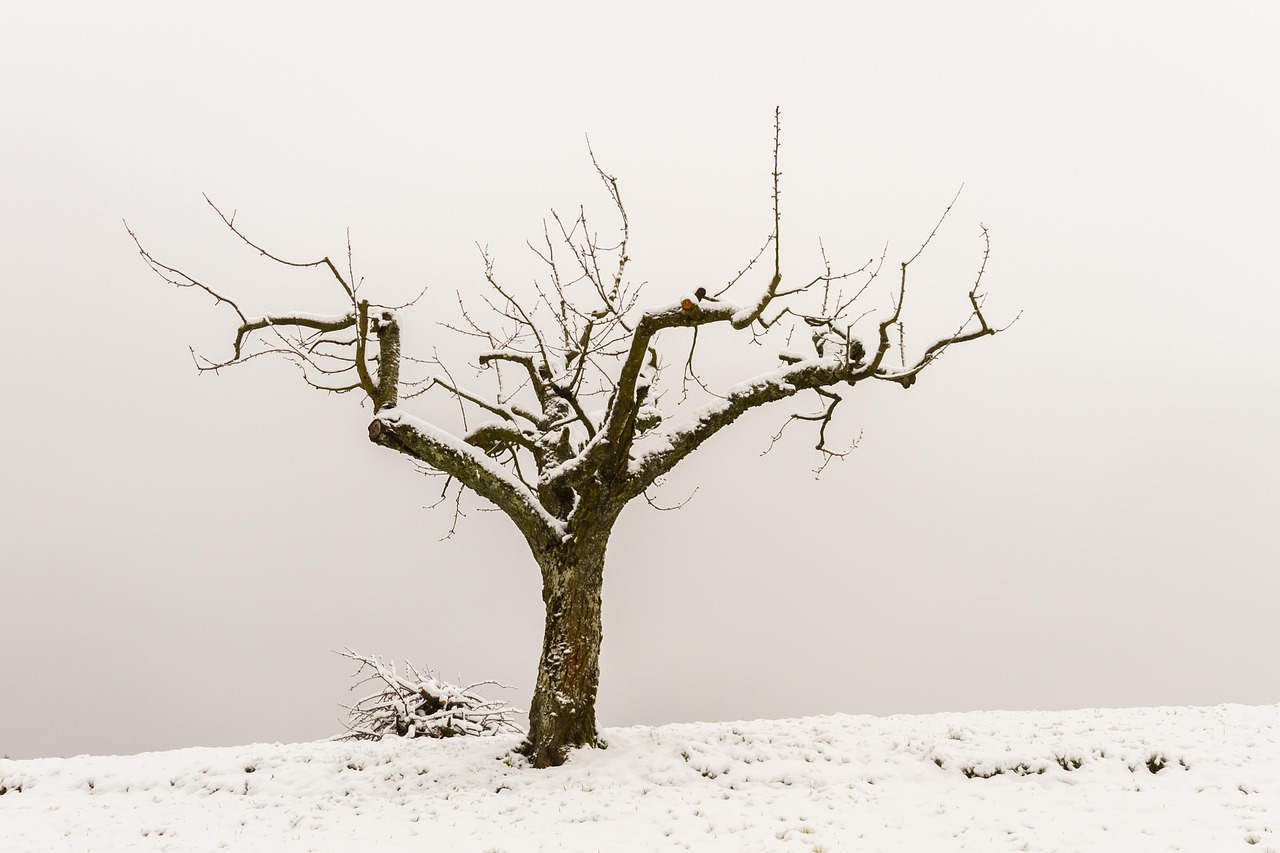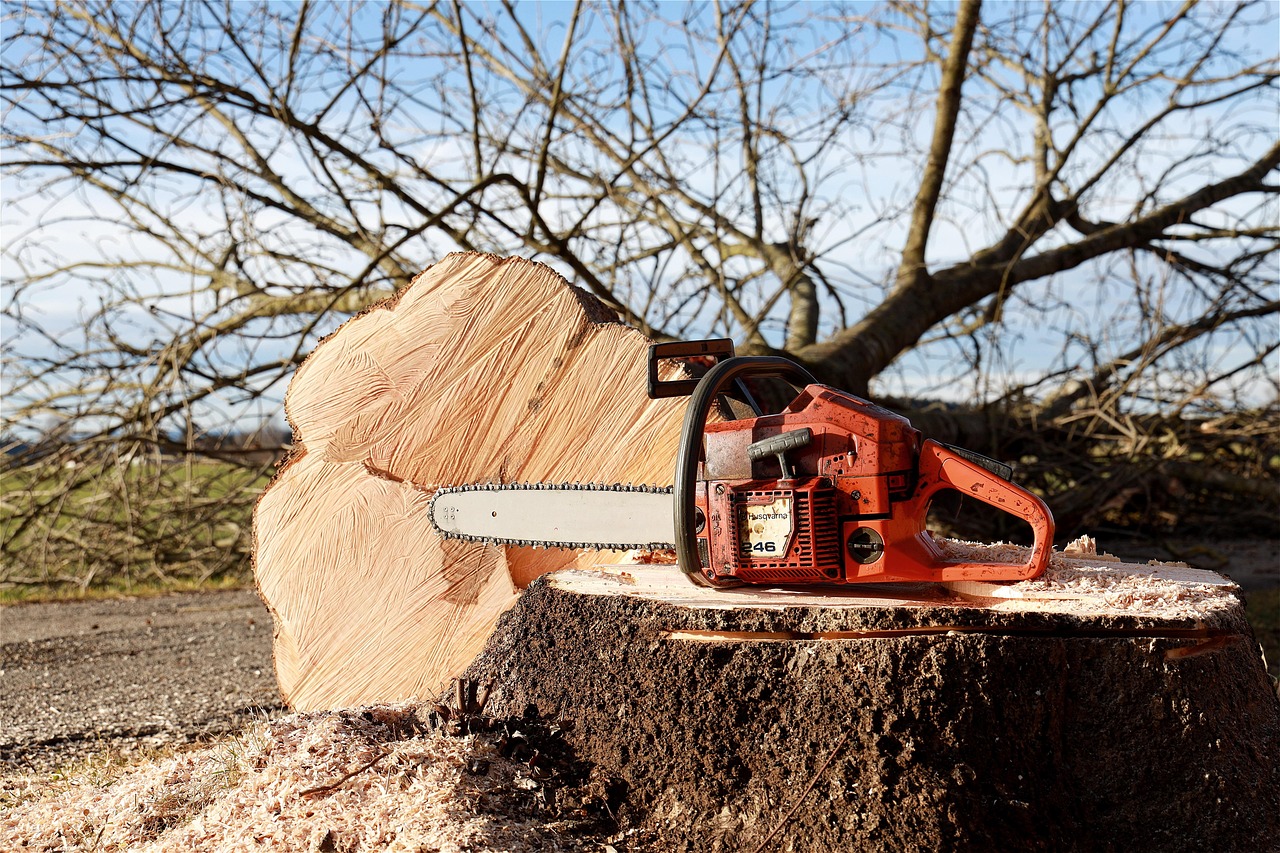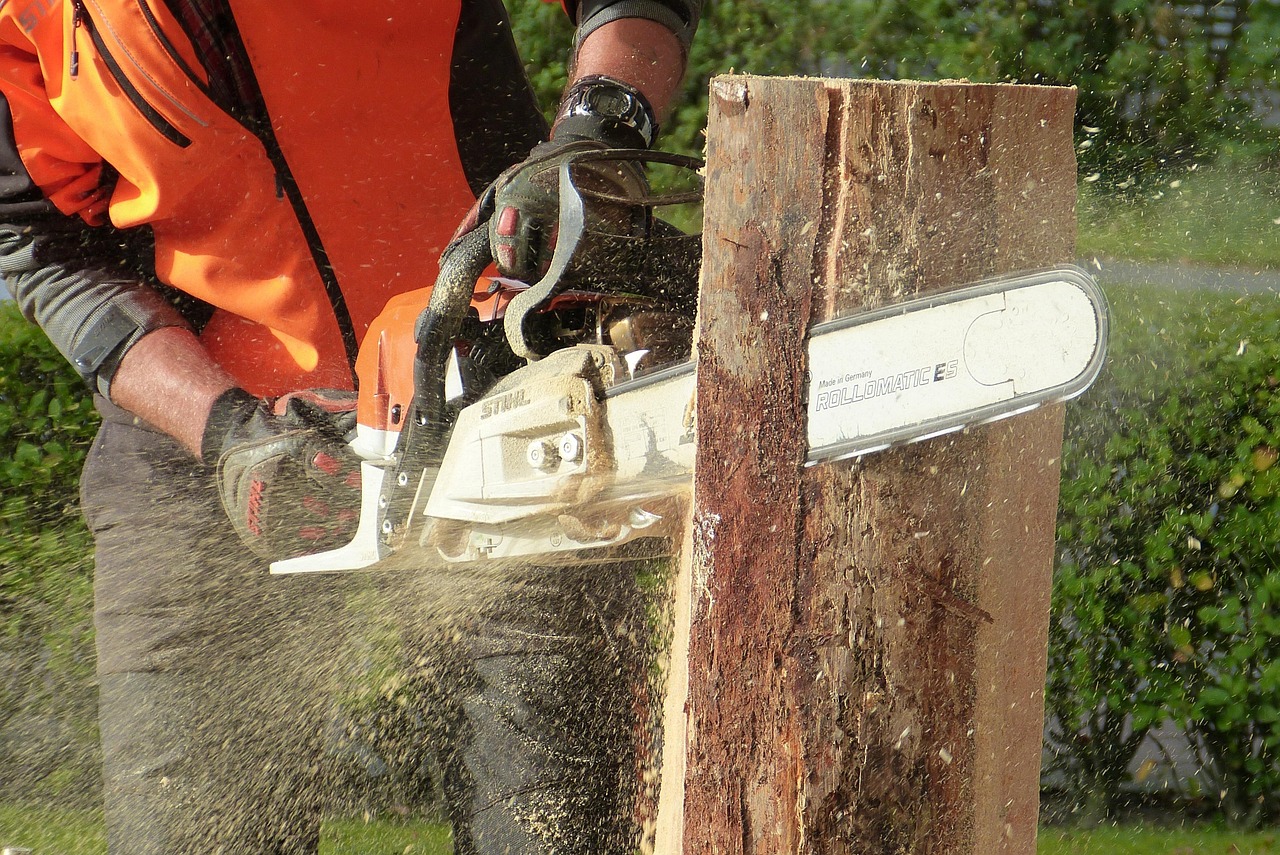Enhancing urban wildlife habitats requires proper tree pruning, native plant integration, and community involvement. Properly pruned trees create safe nesting sites, promote biodiversity, and support local pollinators. Coupled with native plants and sustainable practices, these efforts foster resilient ecosystems that benefit both wildlife and urban residents.
Understanding the Importance of Tree Pruning
Tree pruning is a vital activity in urban areas. It not only maintains the health and aesthetics of trees but also plays a crucial role in supporting local wildlife. In cities, green spaces are limited, making it essential to maximize the benefits of every tree. Pruned trees can provide better habitats for birds, insects, and small mammals.

Urban areas often present challenges for wildlife due to habitat loss and fragmentation. Tree pruning can help create more inviting environments for various species. By enhancing the structure and health of trees, we can support a diverse range of wildlife. This practice can lead to increased biodiversity in urban settings, which is crucial for ecosystem balance.
Common Mistakes to Avoid
When I first started pruning trees for wildlife, I made a few mistakes that I’ve since learned from. One of the biggest errors was pruning too early in the season; I didn’t realize that pruning during the wrong time can disturb nesting birds or stress the tree unnecessarily. Now, I always double-check the appropriate season and avoid pruning during sensitive times.
Another mistake I made was using improper techniques, such as topping branches or making cuts too close to the trunk, which can harm the tree’s health. I’ve since taken the time to learn proper pruning methods like thinning cuts and proper branch removal to promote healthy growth and wildlife habitats.
In my early efforts, I also underestimated the importance of native plants. I initially planted some non-native species that didn’t attract local pollinators or provide suitable habitat. I now focus on native plants to support local wildlife more effectively and ensure the resilience of the habitat I’m creating.
Finally, I used to ignore the role of dead wood, dismissing it as debris. Over time, I realized that dead branches and fallen logs are critical for many species. Leaving some dead wood and avoiding removal at all times has greatly enhanced the biodiversity in my urban green spaces.
The Benefits of Pruning for Wildlife
Pruning trees offers numerous benefits that directly impact urban wildlife. Here are some key advantages:
- Improved Tree Health: Regular pruning removes dead or diseased branches. This helps the tree to grow stronger and healthier, providing a better habitat.
- Increased Light Penetration: Pruned trees allow more sunlight to reach lower vegetation. This encourages the growth of plants that provide food and shelter for various animals.
- Nesting Opportunities: Certain bird species prefer open canopies with adequate space for nesting. Pruning can create suitable conditions for these birds.
- Enhanced Food Sources: Pruned trees can produce more flowers and fruits, attracting pollinators and feeding birds and mammals.
Key Considerations for Effective Pruning
When pruning trees to support urban wildlife, several factors must be considered. It is important to understand the right techniques and timing for pruning. Here are some essential guidelines:

| Factor | Description |
|---|---|
| Timing | Prune during late winter or early spring before new growth begins. This minimizes stress on the tree and protects nesting birds. |
| Technique | Use proper pruning techniques like thinning cuts to maintain tree structure while encouraging healthy growth. |
| Species Consideration | Different tree species have unique needs. Research specific requirements to maximize benefits for wildlife. |
| Safety | Always prioritize safety by using appropriate tools and wearing protective gear when pruning larger trees. |
Understanding these considerations is crucial for successful pruning efforts. Each decision affects not just the tree’s health, but also the broader ecosystem surrounding it. By following best practices, urban areas can cultivate vibrant habitats that promote wildlife diversity.
The Role of Native Plants in Urban Wildlife Habitats
Incorporating native plants into urban landscaping complements tree pruning efforts. Native plants provide essential resources for local wildlife, such as food and shelter. They have adapted to local climate conditions and soil types, making them more resilient than non-native species. This resilience ensures that urban wildlife has a sustainable environment to thrive.
Moreover, native plants often attract native pollinators like bees and butterflies. These insects play a critical role in maintaining plant health and promoting biodiversity. When combined with well-pruned trees, native plants create a rich tapestry of life in urban areas.

Community Involvement in Habitat Creation
Engaging communities in tree pruning and habitat creation is vital for success. Residents can participate in local workshops to learn effective pruning techniques and the importance of maintaining healthy ecosystems. Community involvement fosters a sense of stewardship over local green spaces, encouraging residents to take pride in their surroundings.
Additionally, organizing community tree planting events can enhance habitat creation efforts. These activities not only improve the urban landscape but also strengthen community bonds. By working together, residents can make a significant impact on their local environment.
In summary, effective tree pruning combined with the use of native plants can create thriving wildlife habitats in urban settings. By understanding the benefits and involving the community, we can foster healthier ecosystems that support diverse wildlife populations.

The Ecological Benefits of Tree Pruning
Tree pruning not only enhances the aesthetic appeal of urban landscapes but also provides significant ecological benefits. Healthy trees play a vital role in urban ecosystems, supporting various forms of wildlife. Understanding these ecological benefits helps justify the importance of proper tree care in urban settings.
Enhancing Biodiversity
Pruning trees can lead to increased biodiversity in urban areas. By creating a variety of habitats, pruned trees can support different species of birds, insects, and small mammals. Here are some ways pruning contributes to biodiversity:
- Creating Niche Habitats: Pruned trees can develop various canopy layers, providing different habitats for wildlife.
- Encouraging Plant Growth: Increased light penetration fosters the growth of understory plants, which can attract pollinators and other wildlife.
- Improving Air Quality: Healthy trees improve air quality, creating a more conducive environment for urban wildlife.
Supporting Pollinators
Pollinators such as bees and butterflies are essential for the reproduction of many plants. Pruning can help support these organisms in several ways:
- Promoting Flower Production: Well-pruned trees often produce more flowers, providing food sources for pollinators.
- Creating Safe Nesting Areas: Open canopies and well-maintained branches offer safe places for pollinators to nest.
- Encouraging Diverse Plant Life: Pruning allows for better light distribution, fostering a wide range of flowering plants.
Pruning Techniques for Wildlife Habitat Improvement
Employing the right pruning techniques is crucial for maximizing the benefits to wildlife. Here are several effective methods:
Thinning
Thinning involves removing select branches to improve air circulation and light penetration. This technique encourages healthier tree growth and supports various wildlife species.
- Benefits of Thinning:
- Improves overall tree health.
- Encourages the growth of lower vegetation.
- Reduces the risk of disease by enhancing air flow.
Heading Cuts
Heading cuts involve cutting back branches to a specific point. This technique promotes bushier growth and can create more dense foliage, which is beneficial for nesting birds.
- Benefits of Heading Cuts:
- Provides additional cover for wildlife.
- Encourages fruit-bearing branches, attracting more species.
Crown Reduction
Crown reduction is the process of selectively reducing the size of a tree’s crown. This method helps maintain tree height and can reduce wind resistance, which is especially important in urban environments.
- Benefits of Crown Reduction:
- Maintains structural integrity of the tree.
- Prevents branches from interfering with power lines or buildings.
Timing and Seasonal Considerations for Pruning
The timing of pruning is essential for maximizing benefits to both trees and wildlife. Different seasons provide unique opportunities for effective pruning strategies.
Winter Pruning
Winter is often considered the best time to prune many deciduous trees. During this period, trees are dormant, which minimizes stress and promotes healthy regrowth come spring.
- Advantages of Winter Pruning:
- Easier to see the structure of the tree without leaves.
- Lower risk of disease transmission since pests are less active.
Spring Pruning
For certain species, light pruning in early spring can encourage new growth. This method is particularly effective for flowering trees.
- Advantages of Spring Pruning:
- Enhances flowering potential by stimulating new growth.
- Allows for observation of any winter damage that needs addressing.
The Role of Professional Arborists
While many homeowners may attempt tree pruning themselves, hiring a professional arborist can ensure better outcomes. Arborists are trained to understand tree biology and ecology, making them well-equipped to make informed decisions about pruning.
- Benefits of Hiring an Arborist:
- Expertise in tree health assessment.
- Knowledge of local wildlife needs and habitat requirements.
- Sophisticated tools and techniques to minimize damage during pruning.
By involving professionals, communities can achieve more effective habitat creation efforts that benefit both trees and wildlife significantly. As urban areas continue to grow, collaboration between residents and experts will be essential in fostering healthy ecosystems.
Creating Wildlife-Friendly Landscapes
In addition to tree pruning, creating wildlife-friendly landscapes involves thoughtful planning and implementation of various landscaping techniques. This approach goes beyond simply maintaining trees and incorporates a holistic view of the urban ecosystem.
Choosing Native Plants
Native plants are essential for creating sustainable habitats in urban areas. They are adapted to the local environment and provide food and shelter for wildlife.
- Benefits of Native Plants:
- Require less water and maintenance compared to non-native species.
- Support local pollinators, birds, and other wildlife.
- Help restore local ecosystems by providing habitat connectivity.
Creating Plant Diversity
A diverse selection of plants enhances habitat quality. Incorporating a variety of native trees, shrubs, and ground covers can attract different species of wildlife and strengthen the ecosystem.
- Strategies for Plant Diversity:
- Choose plants with varying bloom times to provide year-round food sources.
- Include plants that offer different types of shelter, such as dense thickets for nesting.
- Incorporate plants with varying heights to create layered habitats.
Implementing Sustainable Practices
Implementing sustainable landscaping practices is crucial for promoting wildlife habitats. These practices not only benefit wildlife but also enhance the health of urban environments.
Water Management Techniques
Effective water management is vital for maintaining healthy landscapes. Here are some techniques to consider:
- Rain Gardens: These are designed to capture runoff from impervious surfaces. They filter water while providing habitat for various species.
- Xeriscaping: This landscaping method uses drought-resistant plants, minimizing water use while still attracting wildlife.
- Permeable Paving: Using permeable materials for walkways and driveways allows rainwater to infiltrate the soil, reducing runoff and supporting plant health.
The Importance of Dead Wood in Urban Habitats
Many may overlook the role of dead wood in urban environments. However, leaving dead trees or branches can significantly benefit local wildlife.
Benefits of Dead Wood
Dead wood serves as a vital resource within ecosystems, providing numerous benefits:
- Nesting Sites: Many bird species, such as woodpeckers, rely on dead trees for nesting cavities.
- Habitat for Insects: Decaying wood supports various insects, which in turn serve as food for birds and other wildlife.
- Nutrient Recycling: As dead wood decomposes, it enriches the soil, promoting plant growth and supporting healthy ecosystems.
Monitoring and Maintenance of Urban Wildlife Habitats
Creating a wildlife-friendly landscape requires ongoing monitoring and maintenance. Regular assessments ensure that habitats remain healthy and functional for wildlife.
Assessment Techniques
Monitoring the health of urban wildlife habitats can be accomplished through various assessment techniques:
- Wildlife Surveys: Conducting surveys helps track the presence of different species and assess habitat usage.
- Vegetation Monitoring: Regularly check plant health and diversity to ensure that native species thrive.
- Pest Management: Identify invasive species or pests that may threaten local wildlife or plants and take appropriate action.
Community Engagement in Habitat Maintenance
Community involvement is crucial for sustaining urban wildlife habitats. Engaging local residents can foster a sense of ownership and responsibility towards their environment.
- Volunteer Programs: Organizing volunteer days for habitat restoration activities can bring community members together while enhancing local ecosystems.
- Educational Workshops: Hosting workshops on the importance of wildlife habitats can raise awareness and encourage more residents to get involved in conservation efforts.
- Citizen Science Projects: Involving the community in data collection for wildlife monitoring can promote education while providing valuable information for habitat management.
The Impact of Urbanization on Wildlife
Urbanization poses significant challenges for wildlife. Understanding these impacts can help guide effective management strategies to create viable habitats within urban settings.
Common Challenges Faced by Urban Wildlife
Urban environments present unique obstacles for wildlife survival:
- Habitat Fragmentation: Urban development often divides natural habitats into smaller, isolated patches, making it difficult for wildlife to thrive.
- Pesticide Use: The application of pesticides can harm beneficial insects and disrupt the food chain.
- Lack of Food Sources: Urban landscapes may not provide adequate nourishment due to limited plant diversity, affecting local fauna.
Mitigation Strategies
To counteract these challenges, several strategies can be employed:
- Create Wildlife Corridors: Establishing green corridors can connect fragmented habitats, allowing wildlife to move freely between areas.
- Reduce Pesticide Usage: Promoting organic gardening practices can help protect beneficial insects while maintaining plant health.
- Diverse Planting Schemes: Increasing plant diversity can provide more food sources and shelter for various species.
By addressing these challenges and implementing targeted strategies, urban planners and communities can work together to enhance wildlife conservation efforts in increasingly urbanized environments.
Enhancing Urban Biodiversity through Community Initiatives
To effectively create habitats for urban wildlife, community initiatives play a crucial role. Engaging local residents not only promotes awareness but also encourages action to improve local ecosystems. Various community-driven projects can significantly enhance urban biodiversity.
Community Gardens
Community gardens serve as vital green spaces that can attract wildlife while providing fresh produce to residents. These gardens often incorporate native plants, making them attractive to pollinators and other beneficial insects.
- Benefits of Community Gardens:
- Provide food sources for local wildlife.
- Encourage community cohesion and shared responsibility for green spaces.
- Serve as educational platforms for sustainability and ecology.
Wildlife-Friendly Landscaping Workshops
Hosting workshops focused on wildlife-friendly landscaping can equip residents with the knowledge needed to create supportive environments for urban fauna. These workshops can cover topics such as:
- Plant Selection: Identifying and choosing native plants that attract specific wildlife.
- Pruning Techniques: Teaching effective pruning methods that enhance tree health and wildlife habitat.
- Pest Management: Discussing organic practices that protect beneficial species within the ecosystem.
Citizen Science Projects
Citizen science initiatives enable residents to contribute to data collection and monitoring efforts. By participating in these projects, community members can help track local wildlife populations and assess the effectiveness of habitat creation strategies.
- Example Projects:
- Bird counts during migration seasons to monitor population trends.
- Insect surveys to document pollinator presence and diversity.
- Plant monitoring to assess the health and growth of native species.
The Role of Policy and Planning in Urban Habitat Creation
Effective urban planning and policy development are essential for supporting wildlife habitats. Local governments and organizations can implement policies that prioritize green infrastructure and habitat preservation.
Incorporating Green Infrastructure
Green infrastructure includes natural and semi-natural systems that provide environmental benefits. Incorporating these elements into urban planning can enhance biodiversity while improving overall city resilience.
- Examples of Green Infrastructure:
- Green Roofs: Rooftop gardens that provide habitat for birds and insects while improving building insulation.
- Permeable Pavements: Materials that allow rainwater infiltration, reducing runoff and promoting healthy soil.
- Urban Forests: Planting trees in public spaces to create habitats while providing shade and improving air quality.
Policy Advocacy for Wildlife Conservation
Advocacy for policies that protect urban wildlife and promote habitat creation is essential. Community members can engage with local government officials to support initiatives such as:
- Zoning Regulations: Ensuring that new developments consider wildlife habitats in their designs.
- Funding for Green Projects: Advocating for budget allocations towards conservation programs and green space maintenance.
- Public Awareness Campaigns: Promoting the importance of biodiversity through educational outreach and media campaigns.
Final Thoughts
The integration of tree pruning practices with community engagement, sustainable landscaping, and supportive policies can significantly enhance urban wildlife habitats. By prioritizing native plants, employing effective pruning techniques, and involving local residents, cities can create vibrant ecosystems that support diverse forms of wildlife.
The challenges posed by urbanization necessitate a proactive approach. Through collective efforts, communities can foster environments where both people and wildlife thrive. As awareness grows regarding the importance of urban biodiversity, more individuals will likely seek ways to contribute positively to their local ecosystems.
Ultimately, successful habitat creation relies on collaboration among residents, professionals, and policymakers. Together, they can cultivate urban landscapes that not only beautify cities but also sustain the rich tapestry of life that exists within them. Encouraging this synergy is vital for the future of urban wildlife conservation.
